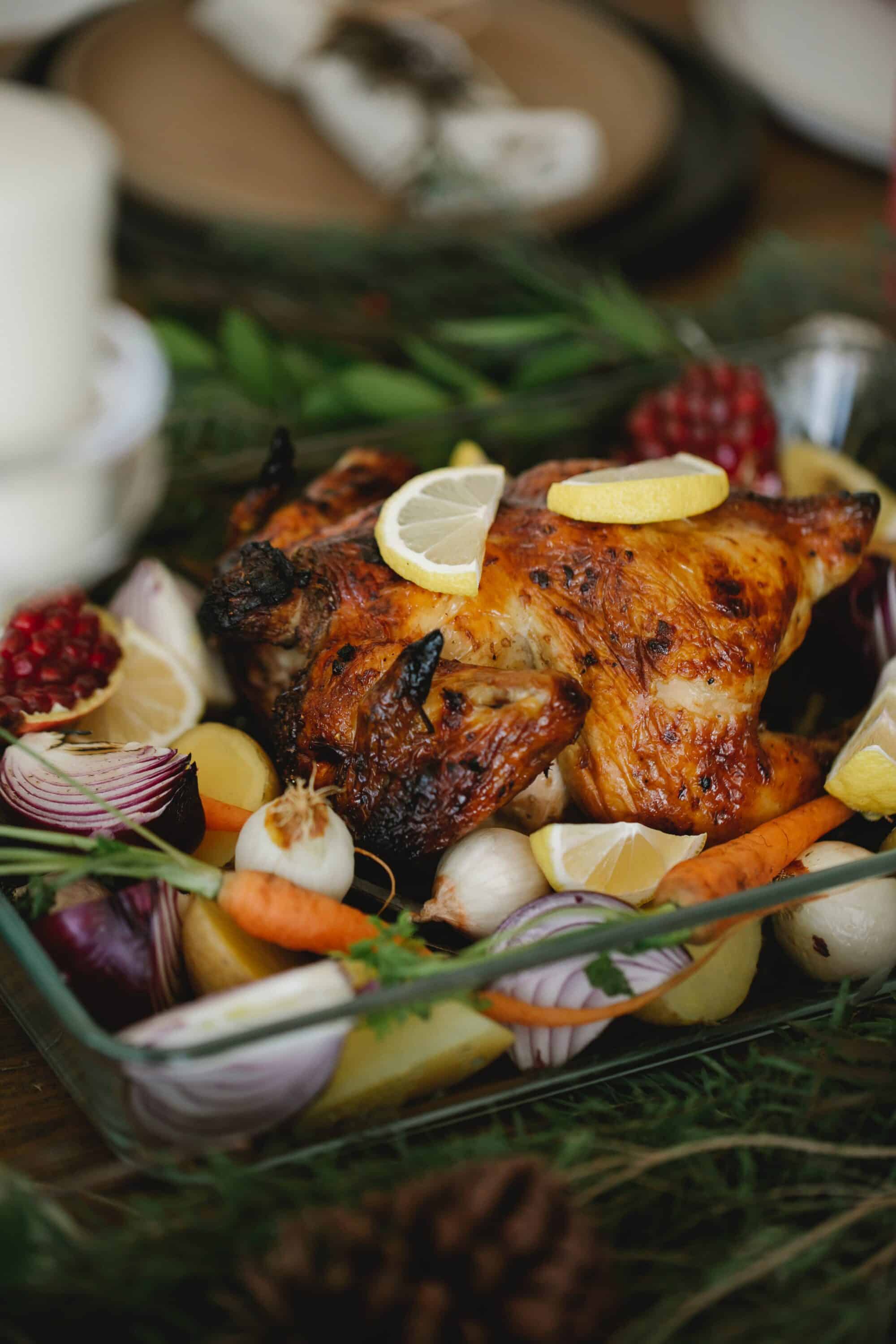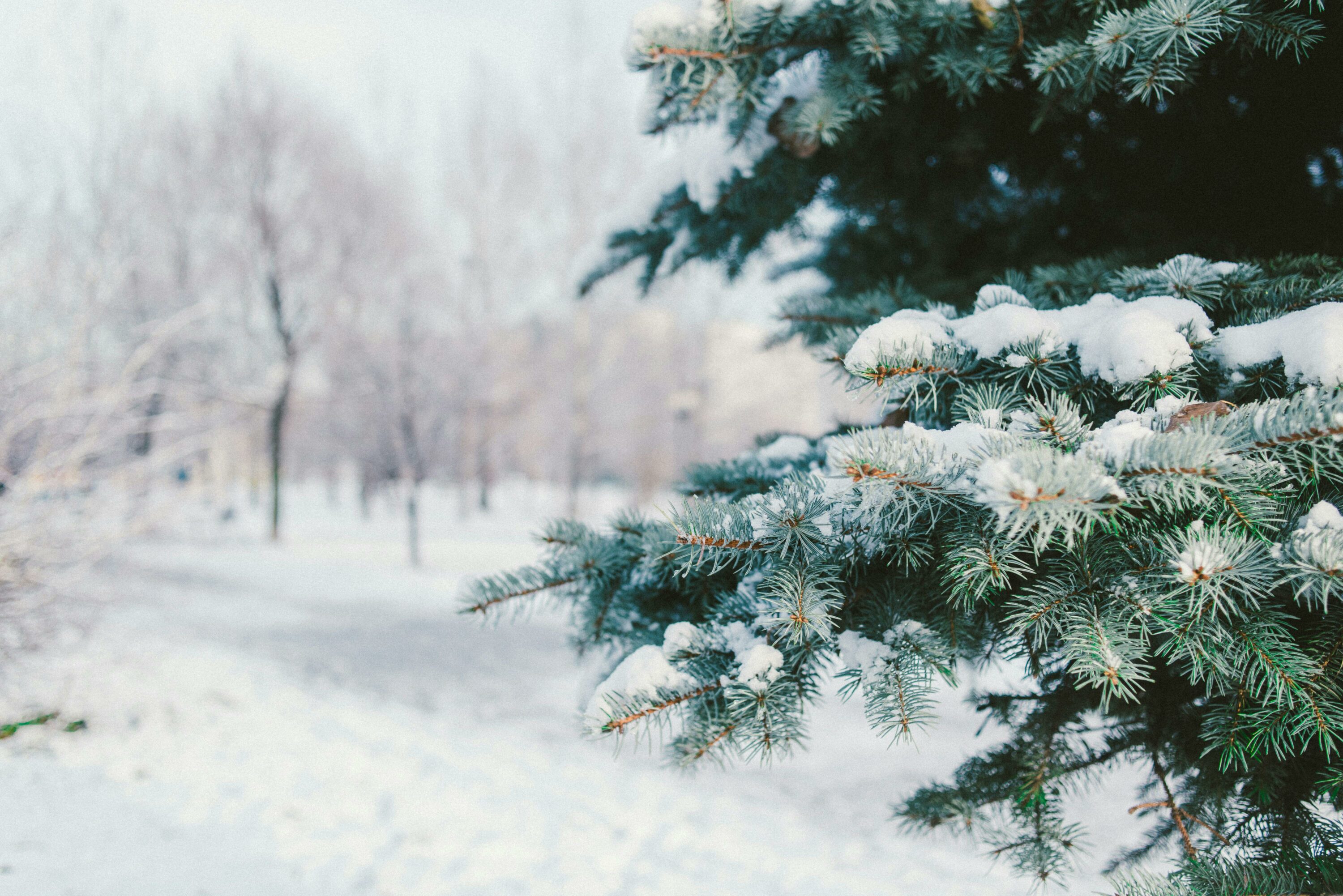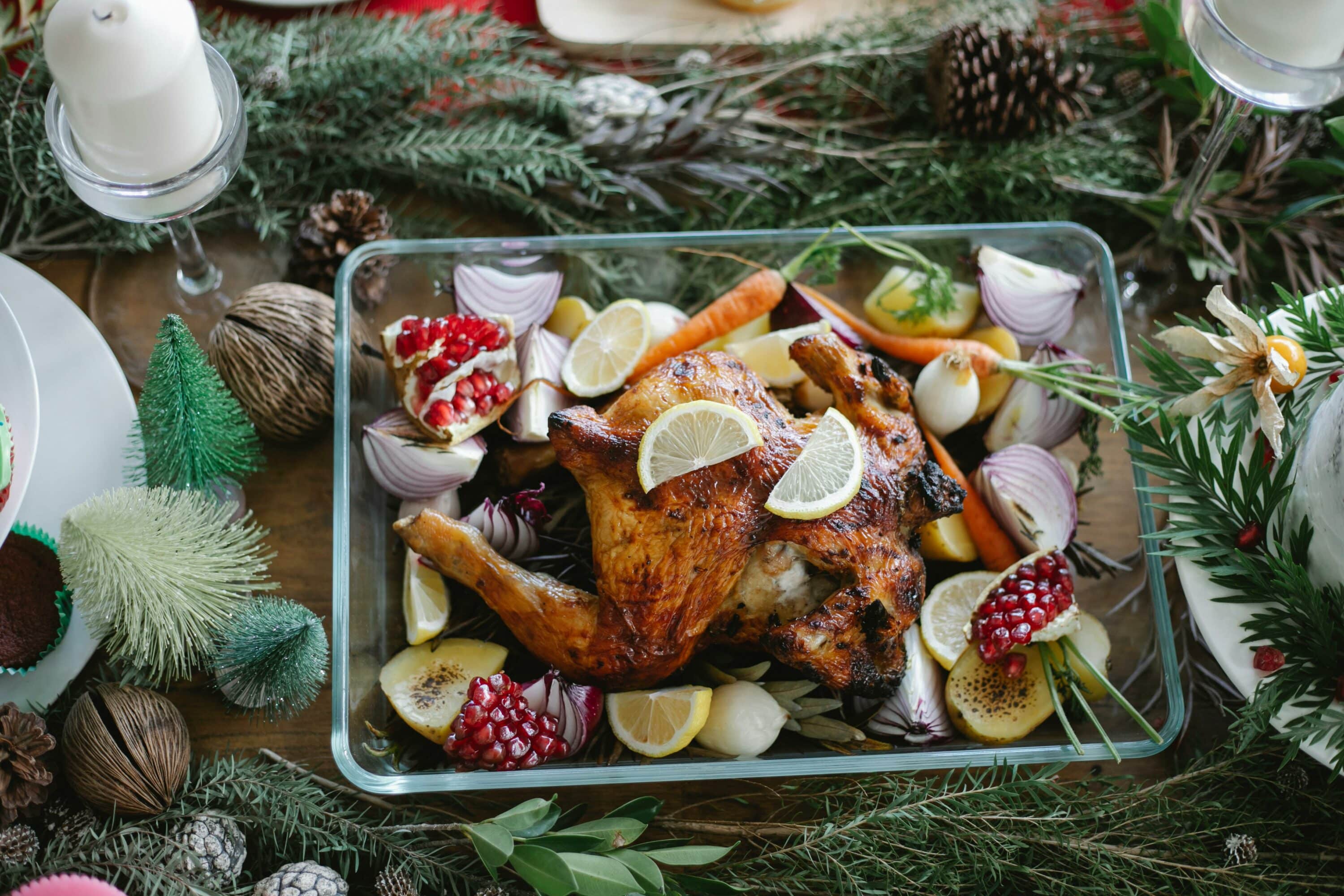Thriving Garden: Best Winter Vegetables for Retirees

As you embrace the leisurely pace of retirement, cultivating a garden can become a source of immense joy and fulfillment. Winter, often perceived as a dormant season, actually presents a unique opportunity to grow a variety of hearty winter vegetables that can withstand the cooler temperatures. Having a garden brimming with vibrant greens and earthy roots not only beautifies your outdoor space but also ensures a steady supply of fresh, nutritious produce just a few steps from your door.
In this article, we’ll explore the best winter vegetables to nurture in your garden. These chosen plants are well-suited for retirees because they require relatively low maintenance and offer plentiful harvests. Whether you’re a seasoned gardener or someone looking to develop a new hobby in retirement, these winter wonders will help you make the most of your time outdoors and provide the satisfaction of homegrown sustenance. Let’s dig into the world of winter gardening and discover which vegetables will help your garden thrive through the chillier months.
CONTENT
Getting Started with Winter Gardening
When it comes to starting a winter garden, preparation is key. Begin by assessing your gardening space to determine the most suitable area for winter crops. You’ll want to choose a spot that receives plenty of sunlight, as this is essential for the growth of winter vegetables. If you’re limited on space, don’t worry – many winter vegetables can thrive in containers or raised beds, making them ideal for retirees with smaller gardens or limited mobility.
Next, familiarize yourself with the requirements of the specific winter vegetables you plan to grow. Some vegetables, such as kale and spinach, are more cold-tolerant, while others, like carrots and beets, may need a bit more protection from frost. Understanding the needs of each plant will help you optimise your garden space and ensure a successful harvest. It’s also important to consider the climate in your area and select vegetables that are well-suited to the local winter conditions.
As you delve into the world of winter gardening, take the time to appreciate the slower pace and the joy of tending to your garden in the cooler months. Embrace the opportunity to nurture new life and look forward to the bountiful rewards that a winter garden can bring. With a bit of planning and a touch of patience, you’ll soon find yourself reaping the benefits of a thriving winter garden right outside your door.

Selecting the Right Location for Winter Crops
Selecting the right location for your winter crops is crucial to their success. Choose a spot that receives ample sunlight, as this will help your vegetables thrive during the shorter days of winter. If possible, opt for a location that is sheltered from strong winds, as this can help protect your plants from potential damage. Additionally, consider the proximity to your home, as having your winter garden conveniently located will make tending to it more manageable, especially during the cooler months.
When deciding on the location, it’s important to assess the drainage of the area. Winter crops can be sensitive to waterlogging, so avoid areas that are prone to water accumulation. To improve drainage, consider raised garden beds or containers, which offer better control over the moisture levels. A well-drained location will reduce the risk of root damage and ensure that your winter crops have a healthy environment in which to grow.
Finally, make sure the location is easily accessible for you to check on your winter crops regularly. Retirees may prefer a location that minimizes the need for excessive bending, lifting, or walking long distances. By selecting a convenient and accessible spot for your winter garden, you’ll be able to enjoy the process of caring for your crops with ease and comfort.
Understanding Soil Preparation for Cold Weather
Preparing the soil for cold weather is essential to provide a nurturing environment for winter vegetables. Start by clearing the area of any debris, including weeds and old plant matter, to create a clean and fresh canvas for your new crops. Once the area is clear, consider adding organic matter, such as compost or well-rotted manure, to enrich the soil. Winter vegetables benefit from nutrient-rich soil, and organic matter provides essential nutrients while also improving soil structure and moisture retention.
In addition to adding organic matter, it’s important to perform a soil test to understand the pH and nutrient levels of the soil. Adjust the pH as necessary to create an optimal growing environment for your winter crops. Most winter vegetables prefer a slightly acidic to neutral pH, so use this information to determine if any adjustments are required. Testing the soil also allows you to address any deficiencies by adding specific nutrients or soil conditioners that may be lacking, ensuring that your winter garden has the best possible start.
Consider the potential impact of cold weather on your soil and take steps to insulate and protect it. Mulching the soil surface with organic materials, such as straw or leaf mulch, can help regulate soil temperature, reduce moisture loss, and suppress weed growth. This layer of mulch acts as a protective barrier for the soil, supporting the overall health of your winter garden and aiding in the successful growth of your chosen vegetables.

Choosing Winter Vegetables That Love the Cold
When selecting winter vegetables for your garden, it’s important to choose varieties that can thrive in colder temperatures. Some of the best winter vegetables for retirees to grow include kale, spinach, and Swiss chard, all of which are not only tolerant of the cold but actually thrive in lower temperatures. These leafy greens are rich in nutrients and can be harvested gradually, providing a continuous supply of fresh produce throughout the winter months.
Root vegetables like carrots, turnips, and beets are also excellent choices for the winter garden. These hardy vegetables develop a sweeter flavor when grown in cooler conditions and can withstand frost. Their ability to be stored for extended periods makes them a practical and rewarding addition to your winter harvest. Additionally, Brussels sprouts and broccoli are cold-hardy options that can add variety and nutritional value to your winter meals.
For those with limited garden space, consider growing herbs like parsley, chives, and cilantro. These cold-tolerant herbs can be easily grown in containers and add flavor and freshness to winter dishes. By diversifying your selection of winter vegetables, you can create a thriving garden that provides a rich and varied harvest, perfect for delighting your taste buds and nourishing your body throughout the winter season.
Timing is Key: When to Plant Your Winter Veggies
Planting winter vegetables at the right time is crucial for a successful and bountiful harvest. When determining the timing for planting, consider the average date of the first frost in your area. Many winter vegetables benefit from being planted well before the first frost, allowing them to establish strong roots and develop resilience to colder temperatures. It’s important to consult a local gardening guide or extension service to obtain specific information about the optimal planting times for your region.
In general, planting winter vegetables in late summer or early autumn provides them with enough time to mature and develop before the cold sets in. This timing allows the plants to take advantage of the relatively warmer days and cooler nights of the early fall, promoting healthy growth. Additionally, certain winter vegetables, such as kale and spinach, can handle light frosts and even improve in flavor after being exposed to cooler temperatures, making them particularly well-suited for early planting.
To optimize your planting schedule, it’s beneficial to plan for a staggered planting approach. By planting some of your winter vegetables at different intervals, you can extend your harvest period and enjoy a continual supply of freshly grown produce throughout the winter. This method also provides a buffer in case of unexpected weather events, ensuring that you’ll still have a variety of crops to enjoy even if some are affected by frost or cold spells.

Watering Wisdom: Keeping Plants Hydrated in Winter
In winter, it’s important to adjust your watering practices to suit the cooler conditions and the unique needs of winter vegetables. While winter precipitation may contribute to the moisture levels in your garden, it’s essential to monitor the soil and ensure that your plants receive adequate hydration. During the winter months, plants typically need less water than in the warmer seasons, but dry winds and prolonged periods without rain can still lead to dry soil. Be mindful of this variation in water requirements and check the soil moisture regularly.
When watering winter vegetables, aim to water the soil directly rather than the foliage, as wet leaves can be more susceptible to frost damage. Utilize a watering can or a soaker hose to provide a gentle and targeted application of water at the base of the plants. This approach reduces the risk of water loss through evaporation and encourages the roots to establish a strong and deep network, promoting the overall health of your winter garden.
To further conserve moisture and protect your plants, consider using a layer of mulch around your winter vegetables. Organic mulches, such as straw or shredded leaves, can help regulate soil temperature, reduce water evaporation, and inhibit weed growth. Additionally, the gradual decomposition of the mulch contributes to the enrichment of the soil, providing a wealth of benefits for the health of your winter garden. By implementing these watering strategies, you can ensure that your winter vegetables remain sufficiently hydrated, setting the stage for a flourishing and resilient garden throughout the season.
Protecting Your Garden from Frost and Snow
During winter, it’s vital to protect your garden from the potential hazards of frost and snow to maintain the health and vitality of your winter vegetables. To safeguard your plants from frost, consider using frost cloth or row covers to create a protective barrier. These materials can be draped over the plants to shield them from extreme cold while still allowing sunlight to penetrate and air circulation to occur. Additionally, placing containers of water around the garden can help moderate temperature fluctuations and reduce the likelihood of frost damage.
Snow can also pose challenges for winter crops, particularly when it accumulates heavily and exerts pressure on the plant stems. To prevent snow-related damage, gently brush off excess snow from the leaves and stems of your vegetables. Be cautious and avoid causing any physical trauma to the plants while clearing the snow, as excessive handling can harm the delicate winter varieties. It’s important to maintain a delicate touch and gentle approach to ensure the well-being of your plants.
Consider the use of garden cloches or cold frames to provide additional protection for your winter vegetables. Cloches are clear coverings that can be placed over individual plants, while cold frames are enclosed structures that create a microclimate to shield plants from harsh weather conditions. Both options offer a way to shield your crops from the elements without impeding their growth, allowing your winter vegetables to thrive in a sheltered environment. By taking proactive measures to protect your garden from frost and snow, you can help your winter vegetables endure the challenges of the colder months and continue to flourish.

Companion Planting for a Healthier Winter Harvest
Companion planting is a time-honored gardening practice that involves strategically placing different plant species together to create a mutually beneficial relationship. In the context of a winter garden, companion planting can play an essential role in promoting the health and productivity of your winter vegetables. For example, pairing cold-hardy vegetables like broccoli and Brussels sprouts with aromatic herbs such as rosemary and thyme can help deter pests that are typically active during the winter months. The fragrant herbs act as natural repellents, creating a protective barrier around your vegetable plants.
In addition to pest management, companion planting can also enhance the overall soil health and nutrient uptake of your winter garden. For instance, the practice of interplanting nitrogen-fixing legumes like peas and beans with leafy greens such as kale or spinach can contribute to the enrichment of the soil. Legumes have the ability to convert atmospheric nitrogen into a form that can be assimilated by other plants, thus providing a natural source of fertilization for your winter vegetables. This symbiotic relationship supports the vigorous growth of your crops and contributes to a healthier and more bountiful harvest.
Furthermore, consider integrating flowering plants such as marigolds and calendula into your winter garden. These bright and cheerful blooms not only add visual appeal to your garden but also attract beneficial insects like bees and ladybugs. These helpful insects play a vital role in pollination and pest control, fostering a balanced and thriving ecosystem within your garden. By embracing the principles of companion planting, you can cultivate a vibrant and interconnected garden that supports the well-being of your winter vegetables and promotes a harmonious coexistence among diverse plant species.
Natural Pest Control Methods for Winter Gardens
In a winter garden, the presence of pests can pose a threat to the health and productivity of your vegetables. To address this concern, consider implementing natural pest control methods to safeguard your garden. One effective approach is to introduce beneficial insect species, such as ladybugs and lacewings, which are natural predators of common garden pests like aphids and caterpillars. By attracting and supporting these beneficial insects, you can establish a harmonious balance and reduce the population of harmful pests in your garden.
Another natural pest control method involves the use of companion plants known for their pest-repelling properties. For instance, planting aromatic herbs like mint, dill, and thyme alongside your winter vegetables can help deter pests through their strong scents. Additionally, incorporating flowering plants such as marigolds and nasturtiums can attract predator insects while repelling harmful pests. This strategic use of companion plants not only contributes to the visual diversity of your garden but also serves as an effective and natural form of pest management.
Consider the application of organic pest deterrents and barriers to protect your winter vegetables. For example, neem oil, a natural insecticide derived from the seeds of the neem tree, can be used to control pests such as aphids, whiteflies, and caterpillars. Additionally, physical barriers made from fine mesh or netting can effectively shield your plants from pests while allowing air, light, and water to circulate freely. By embracing these natural pest control methods, you can nurture a thriving winter garden that remains resilient against potential pest infestations, ensuring a bountiful and healthy harvest.

Harvesting and Storing Your Winter Bounty
As the cooler months progress, it’s time to reap the rewards of your winter garden by harvesting the bounty of fresh, homegrown produce. When harvesting winter vegetables, it’s essential to do so at the right time to ensure optimal taste and texture. Leafy greens such as kale and spinach are best harvested when the leaves are young and tender, as prolonged growth can lead to bitterness. Root vegetables like carrots and turnips can be harvested as needed, but it’s advisable to remove them from the ground before the soil freezes to prevent damage.
After harvesting, it’s crucial to store your winter vegetables properly to preserve their quality and freshness. For root vegetables, remove the tops and store them in a cool, dark place with high humidity, such as a root cellar or a refrigerator. Leafy greens can be stored in the refrigerator with a damp paper towel to maintain moisture and crispness. It’s advisable to check stored vegetables periodically for any signs of spoilage, and remove any damaged or rotting produce to prevent the spread of decay.
To prolong the availability of homegrown winter vegetables, consider methods of preservation such as blanching and freezing. Blanching involves briefly immersing vegetables in boiling water followed by a plunge into ice water, preserving the color, flavor, and nutrient content. Once blanched, the vegetables can be portioned and frozen for later use, ensuring that your harvest continues to provide nourishment and enjoyment throughout the winter months. By embracing these harvesting and storage practices, you can savor the fruits of your labor and relish the satisfaction of enjoying your homegrown produce well into the wintertime.
Benefits of Homegrown Winter Vegetables for Health
Homegrown winter vegetables offer an array of health benefits that are especially important for retirees seeking to maintain wellness and vitality. First and foremost, homegrown vegetables are fresher and more nutrient-dense compared to store-bought produce, as they can be harvested at peak ripeness and consumed soon after. This means that homegrown winter vegetables retain a higher concentration of essential vitamins, minerals, and antioxidants, providing a substantial boost to overall health and immune function.
Another noteworthy advantage of homegrown winter vegetables is the opportunity to cultivate a diverse selection of varieties that may not be readily available in commercial markets. By growing an assortment of vegetables in your winter garden, you can expand your culinary repertoire and introduce new flavors and textures into your diet. This culinary diversity not only enhances the dining experience but also exposes you to a wider range of beneficial plant compounds and phytonutrients, adding vibrancy and nutritional richness to your meals.
Furthermore, the act of tending to a winter garden and reaping the rewards of a bountiful harvest can be a source of physical activity and mental stimulation, contributing to overall well-being. Engaging in gardening activities such as planting, weeding, and harvesting provides light to moderate exercise and the opportunity to spend time outdoors, which can be especially beneficial for retirees. The sense of purpose and accomplishment derived from nurturing a winter garden can also promote mental and emotional wellness, fostering a positive outlook and a deeper connection to the natural world. Through the cultivation and consumption of homegrown winter vegetables, retirees can experience a holistic approach to health that encompasses nutrition, physical activity, and emotional fulfillment.

Gardening as a Winter Hobby for Retirees
Gardening serves as more than just a productive pastime – it is a fulfilling and enriching winter hobby that offers countless benefits to retirees. Cultivating a winter garden provides an opportunity to engage in meaningful physical activity and spend time outdoors, promoting overall wellness and vitality. Whether it’s digging, planting, or tending to the garden, these activities offer light to moderate exercise, contributing to the maintenance of flexibility, strength, and mobility for retirees. The exposure to natural light and fresh air that comes with gardening is also known to enhance mood and promote a sense of well-being, creating a valuable outlet for relaxation and rejuvenation.
In addition to the physical benefits, gardening during the winter months can be a mentally stimulating and intellectually rewarding pursuit. Planning and care-taking for a winter garden involves problem-solving, strategic thinking, and continuous learning, which can help keep the mind sharp and engaged. Selecting the right vegetables, considering the needs of each plant, and addressing potential challenges such as frost or pests all contribute to a sense of cognitive activity and accomplishment. This mental engagement can be especially fulfilling for retirees, providing a sense of purpose and achievement that comes from nurturing a garden through the winter season.
Furthermore, gardening offers retirees the opportunity to connect with others who share similar interests. Whether it’s through joining community garden groups, attending gardening workshops, or simply sharing gardening tips and produce with neighbors, gardening can foster a sense of community and camaraderie. This social aspect not only provides opportunities for meaningful interactions and friendships but also contributes to a sense of belonging and connectedness, which is vital for emotional well-being, particularly during retirement. By embracing gardening as a winter hobby, retirees can experience a holistic and fulfilling activity that nourishes the body, mind, and spirit.
Conclusion
As retirees embark on the journey of winter gardening, they uncover a wealth of benefits that extend beyond the confines of the garden. From the physical activity and fresh air to the nutrient-rich harvest and the sense of purpose, the act of nurturing a winter garden offers a holistic approach to well-being. The practice of growing winter vegetables not only enhances dietary variety and nutritional intake but also fosters a connection to nature, a sense of accomplishment, and a space for social interaction. Embracing gardening as a winter hobby can provide a source of joy, creativity, and meaningful activity, enriching the retirement experience with a vibrant tapestry of health, wellness, and community. As the winter garden blooms and thrives, so too does the sense of fulfillment and contentment for retirees, offering a rewarding and enriching pastime that extends well beyond the seasonal chill.






